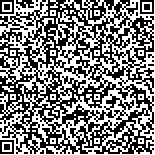下载中心
优秀审稿专家
优秀论文
相关链接
摘要

随着获取的遥感数据越来越多,定量遥感正处于一个飞速发展的时期。本文从反演方法和遥感数据产品生成两个主要方面对近期陆表定量遥感的发展进行评述。由于大气-陆表系统的环境变量数远远超过遥感观测数,定量遥感反演的本质是个病态反演问题。在评述机器学习方法(包括人工神经网络、支持向量回归、多元自适应回归样条函数等)的应用基础上,重点关注克服病态反演的7种正则化方法:多源数据、先验知识、最优化反演的求解约束、时空约束、多反演算法集成、数据同化和尺度转换。定量遥感发展的另外一个显著特征是由数据提供者(比如数据中心)将观测的遥感数据转换成不同的地球生物物理化学参数产品,即遥感高级产品,并服务于数据使用者。概括介绍了北京师范大学牵头研发的GLASS(Global LAnd Surface Satellite)产品的新进展与全球气候数据集的研发情况。
With the availability of the increased amount of remotely sensed data, quantitative remote sensing is in a period of rapid development. This paper reviews the recent development of the quantitative remote sensing of land surface from the two main aspects:inversion methodology and generation of the remote sensing data products. Because the number of environment variables in the atmosphere and land surface system is much larger than that of remote sensing observations, the nature of remote sensing inversion is an ill posed inversion problem. After reviewing the machine learning methods (e.g. artificial neural network, support vector regression, multivariate adaptive regression splines) and their applications, we mainly focus on seven regularization methods for overcoming the ill posed inversion problem:using multi-source data, a prior knowledge, constrained optimization, spatial and temporal constraints, integration of multiple inversion algorithms, data assimilation, and scaling. Another significant feature of the quantitative remote sensing development is satellite observations are transformed into different geophysical and geochemical parameters, namely remote sensing high-level products, for the user community by the data providers (e.g., data acenters). This paper mainly introduces the latest development of the Global LAnd Surface Satellite (GLASS) products produced by Beijing Normal University, and the research and the development of the Climate Data Record for climate studies.

